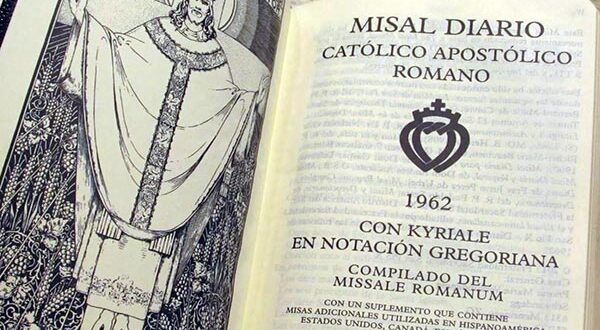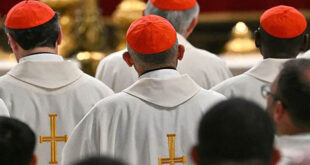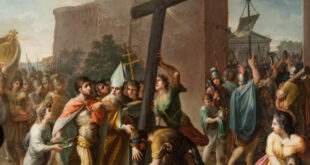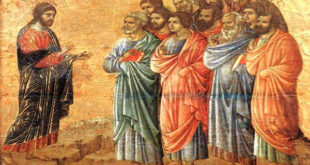In a world where modernity and constant change seem to dominate every aspect of life, including religion, it is surprising that a centuries-old liturgical form is experiencing a resurgence worldwide. The 1962 Missal, also known as the Tridentine Mass or the Extraordinary Form of the Roman Rite, is attracting a growing number of faithful, both young and old, who seek a deeper connection with the tradition and spirituality of the Catholic Church. But what exactly is the 1962 Missal, and why is it gaining new followers in the 21st century?
A Glimpse into the History of the 1962 Missal
The 1962 Missal is the last version of the Roman Missal promulgated before the Second Vatican Council (1962-1965). This missal is the result of a liturgical evolution dating back to the Council of Trent (1545-1563), when Pope Pius V codified and unified the liturgy of the Latin Church in response to the Protestant Reformation. For centuries, the Tridentine Mass was the predominant form of Eucharistic celebration in the Catholic Church, characterized by its solemnity, its use of Latin, and its focus on the transcendence of God.
However, after the Second Vatican Council, the Church introduced a liturgical reform that gave rise to the Novus Ordo Missae (New Order of the Mass), celebrated primarily in vernacular languages and with a more participatory approach for the faithful. Although the Novus Ordo was widely adopted, the 1962 Missal was never officially abolished. In 2007, Pope Benedict XVI, through the motu proprio Summorum Pontificum, recognized the legitimacy of the Tridentine Mass and facilitated its celebration, allowing this liturgical form to flourish once again in many parishes and communities around the world.
The Timeless Beauty of the Tridentine Mass
One of the main reasons the 1962 Missal is gaining new followers is its timeless beauty. The Tridentine Mass is a liturgical experience that transcends time and space, leading the faithful to a profound encounter with the sacred. From the use of Latin, the sacred language of the Church, to the ceremonial gestures and Gregorian chant, every element of the Tridentine Mass is designed to elevate the soul toward God.
Silence also plays a crucial role in this liturgical form. Unlike the Novus Ordo Mass, where dialogue between the priest and the faithful is more frequent, the Tridentine Mass allows for extended moments of recollection and contemplation. This silence is not empty but filled with meaning, inviting the faithful to enter into an intimate dialogue with God.
Additionally, the priest’s orientation toward the altar, known as ad orientem, symbolizes that both the celebrant and the congregation are together on a pilgrimage toward the Lord. This gesture reinforces the idea that the Mass is not simply a community gathering but an act of worship and sacrifice directed to God.
A Refuge for Young Catholics
One of the most surprising phenomena in the resurgence of the 1962 Missal is its popularity among young Catholics. In an era marked by secularization and the loss of religious identity, many young people are finding in the Tridentine Mass a sense of belonging and a connection to the roots of their faith.
For many of these young people, the Tridentine Mass represents an alternative to what they perceive as a sometimes overly informal or secularized liturgy. Rather than seeking a religious experience adapted to current cultural trends, these faithful seek something that makes them feel they are participating in something greater than themselves, something that connects them to the Church’s millennia-old tradition.
Moreover, the Tridentine Mass offers an implicit catechesis through its rites and symbols. Every gesture, word, and prayer is laden with theological meaning, allowing the faithful to deepen their understanding of the faith in a way that goes beyond the intellectual.
A Global Movement
The resurgence of the 1962 Missal is not limited to a single country or region. From the United States to Europe, Latin America, and Asia, entire communities are rediscovering this liturgical form. In many places, Tridentine Masses are attracting a growing number of faithful, including entire families seeking to pass on a deeper and more reverent experience of faith to their children.
In France, for example, the Priestly Fraternity of Saint Pius X (FSSPX) and other traditionalist communities have kept the flame of the Tridentine Mass alive for decades. In the United States, organizations such as the Priestly Fraternity of Saint Peter (FSSP) and the Institute of Christ the King Sovereign Priest (ICKSP) are experiencing significant growth, with new parishes and chapels dedicated exclusively to the Extraordinary Form of the Roman Rite.
Even in countries where the Catholic Church has faced significant challenges, such as Germany or the Netherlands, the Tridentine Mass is attracting a growing number of faithful seeking an alternative to more modern liturgies.
A Call to Unity in Diversity
The resurgence of the 1962 Missal is not without controversy. Some see in this movement an implicit critique of the Second Vatican Council and the liturgical reforms that followed. However, many defenders of the Tridentine Mass insist that it is not about rejecting the Novus Ordo but about enriching the Church’s liturgical life through the coexistence of both forms.
Pope Benedict XVI, in Summorum Pontificum, emphasized that the two forms of the Roman Rite are valid expressions of the same faith and should not be seen as opposed but as complementary. In this sense, the 1962 Missal can be seen as a liturgical treasure that enriches the entire Church, offering the faithful a variety of ways to celebrate and live their faith.
Conclusion: A Liturgical Gem for the 21st Century
The 1962 Missal is much more than a relic of the past; it is a liturgical gem that continues to shine brightly in the 21st century. Its resurgence is not merely a passing trend but a sign that many Catholics are seeking a deeper, more reverent, and tradition-connected experience of faith.
For those who have not yet had the opportunity to attend a Tridentine Mass, this may be the perfect time to discover this unique liturgical form. In an increasingly chaotic and secularized world, the 1962 Mass offers a refuge of peace, beauty, and transcendence, reminding us that the liturgy is, above all, an encounter with the divine.
In the words of Pope Benedict XVI, “What was sacred for previous generations remains sacred and great for us as well.” The 1962 Missal is living proof that, in the richness of its tradition, the Catholic Church possesses a treasure that can inspire and transform present and future generations.






